Last updated on September 29th, 2022
Honduras, officially the Republic of Honduras, is a country in Central America. It has an area of 112,090 square km. Tegucigalpa is its capital and largest city. Spanish is its official language. English is also used but mostly by business executives, professionals, and government officials. Lempira (HNL) is its official currency. Its three land bordering countries are Guatemala, Nicaragua and El Salvador. The country shares maritime borders with four countries – Colombia, Cuba, Belize, and Mexico. The inhabitants or natives of this region are called Honduran.
Honduras is a wonderful country and it has a bustling tourist economy. For conventional tourists, the large cosmopolitan cities, wonderful food, and friendly locals are the main draw. But very few tourists also get to experience Honduras’ quirky, musical, and weird side up close and personal.
Interesting Facts About Honduras
1. Honduras was named by Christopher Columbus for the deep waters just off its coast. Columbus claimed the land for King Ferdinand of Aragon and Queen Isabella of Castile. The term “honduras” means the great depths.
2. Honduras was once home to the Mayans, who were the most powerful of the indigenous tribes.
3. Honduras has the Bay Islands, which are a group of small islands found in northern Honduras. The three main islands are Utila, Guanaja, and Roatan. Guanaja was nicknamed “Venice of Honduras” due to the many waterways that line the island.
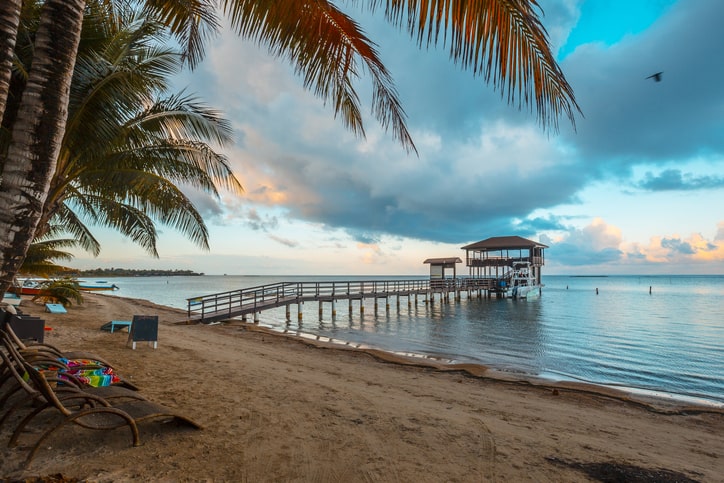
4. Hondurans call themselves “catrachos” or “catrachas”. The term comes from the name of Gen. Florencio Xatruch, who won a battle against Americans in the 18th century fighting with El Salvador. Returning as victors, Xatruch and his men were greeted with yells of, “Aqui vienen los xatruches!”, which means, “Here come Xatruch’s men!” Xatruch’s name was difficult to pronounce, so it was modified to “catruches” and later to “catrachos” for the men and “catrachas” for the women.
5. The Honduran currency is the Lempira. It was named after the war chief Lempira, a Lencan ruler, who fought against the Spanish in the 1530s. One lempira is equivalent to 100 centavos.
6. The Mayan civilization was an important part of early Honduran society. The ruins of their ancient city, Copan, can be found in western Honduras. Before the collapse of the Mayan civilization, Copan was once ruled by 16 kings from AD 426 to 820. The ancient Mayans were quite advanced for their time, having developed their own hieroglyphic writing and calendar systems. They also had highly developed interest in astronomy and built impressive ceremonial buildings, including temples, observatories, and pyramids.
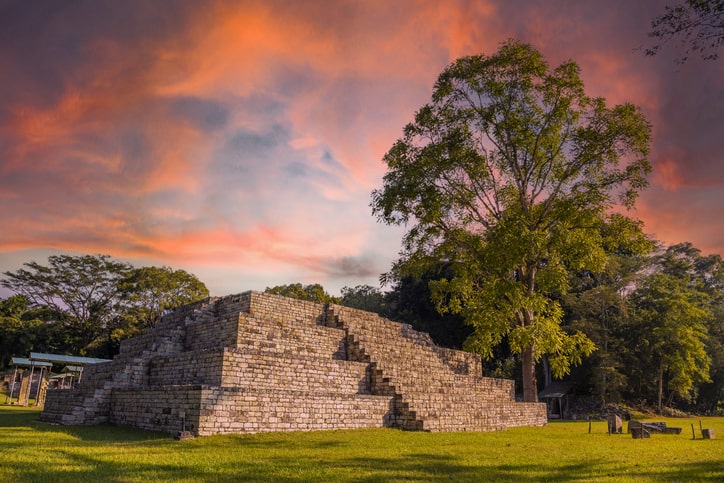
7. The Mayan ruins are well-maintained by the Honduran government and is one of the most popular spots for tourists to visit. The ruins were estimated to have been built between 400 A.D. and 800 A.D. when Copan was once the capital city.
8. Spain conquered Honduras in the 16th century. The conquest lasted from 1524 to 1821, which is why Spanish influence is prevalent throughout the country. During the early years of the conquest, many Spaniards came to Honduras as immigrants, establishing their own communities in the country.
9. On the list of facts about Honduras, this fact is interesting yet funny. Honduras was once called Banana Republic. The term was coined by O. Henry, an American author, in 1904. The moniker refers to a country with an unstable economy that depends on the exportation of a single product. In the case of Honduras, it was bananas. The country is working hard to eliminate their association with this term.
Honduras on the map
10. An estimated 76% of Hondurans are Christians, with most practitioners being Roman Catholic. Others adhere to the Protestant religion. Before the Spaniards came to the country, the native people were polytheistic.
11. Honduras is sometimes called Spanish Honduras to distinguish it from British Honduras. The latter is now known as Belize.
12. Honduras has two capitals. Tegucigalpa served as its capital starting in 1880. When the 1936 Honduran Constitution was implemented, it called for the integration of Tegucigalpa and Comayaguela, its sister city, into one Central District. The Central District was designated as the capital in 1982, which makes both Tegucigalpa and Comayaguela the capitals.
13. The Honduran motto is “Libre, soberana e independiente”, which means, “Free, sovereign, and independent”.
The flag of Honduras
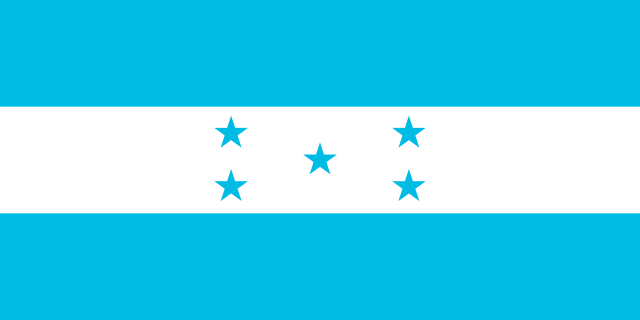
14. The Honduran flag features its own five stars and stripes. The five stars symbolize the countries in Central America while the stripes symbolize the Caribbean Sea and the Pacific Ocean.
15. Honduras has struggled against corruption for decades. It remains one of the poorest countries in South America, also having the lowest income.
16. Honduras’ gangs are notorious for their criminal activities. One of its more dominant and infamous groups is the Mara Salvatrucha, more commonly known as MS-13. Mara comes from the term “marabunta”, meaning roaring ants, while “salvatrucha” means street-smart Salvadorians.
17. Honduran society has to endure disruption caused by violent local gangs. It does not help that there is abuse and corruption at many levels of the government. Although the country relies on its military for protection, even security forces have been known to commit abuses.
18. Hondurans love soccer. Or, as they call it in the country, futbol (football). Their national team is known as Los Catrachos whose first international game was played against Guatemala in 1921. The team won the CONCACAF Championship in 1981, took home the UNCAF Nations Cup in 1993, 1995, and 2011, and came home with a bronze in the 2001 Copa America.
19. A war fought between Honduras and El Salvador is nicknamed “Football War”. After a hotly-contested game, El Salvador prevailed over Honduras, which lost the chance to go to the 1970 World Cup. Within just 3 weeks, Honduras was fighting a war with El Salvador but it was mainly due to economic and political issues involving immigration, and disputes regarding land and sea borders.
20. The Football War was a short one. It lasted only 100 hours. The war started on July 14, 1969 with El Salvador making the first strike and ended on July 18, 1969 thanks to a ceasefire negotiated by OAS (Organization of American States).
21. Honduras has the largest wilderness in Central America. Its forest area is about 46% of the whole country or more than 5 million hectares. Unfortunately, it loses about 1.81% of its wilderness area every year.
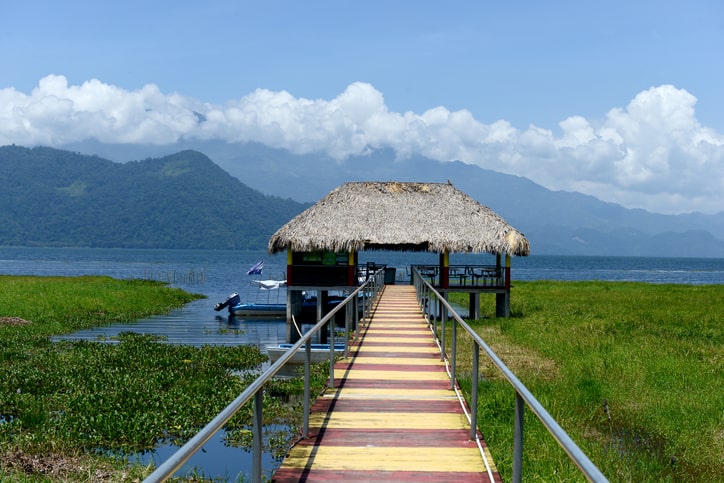
22. Lake Yojoa is the largest freshwater lake in the country. It has an area of 88 sq. km. and is bordered by mountains. Its name is derived from a Mayan term that means water collecting on the ground. The surrounding area houses a unique biodiversity and the lake itself is a favorite fishing destination.
23. Honduras is a veritable star in the history of chocolate. After all, it was here where Europeans had their first taste of the heavenly bean. According to historians, it was in Guanaja where Columbus first tasted the delicious (if bitter) brew. The native Paya Indians prepared a hot beverage of cacao beans by mixing them with hot peppers. Columbus bartered to have several cacao seeds and brought them back to Spain.
24. The buses that ply the local route in Honduras are brightly-colored vehicles that are easily spotted on the busy roads. They are called chicken buses and are the cheapest form of transportation in many areas. As a result, they are often packed and take a long time to arrive at its destination because they often stop to pickup and let off passengers.
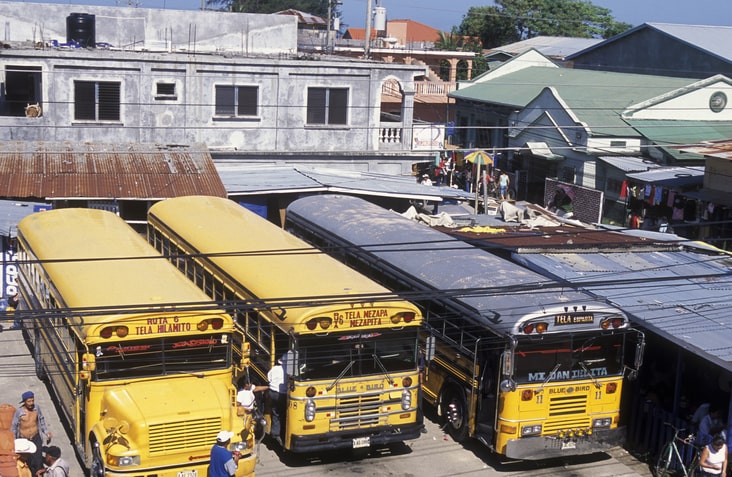
25. Among other Honduras’ facts, this deserves a special mention. Hondurans have a strong sense of family. Children, particularly female children, remain with their families even as adults. Sometimes, they even live with their parents even after marrying.
26. Before the pandemic, social distancing was an alien concept among Hondurans. They like to stand close while talking. They are indirect when it comes to communication to avoid confrontation and hurt feelings. They are not averse to showing affection in public and would often greet friends and family loudly.
27. Hondurans have a unique way of pointing to things, places, or people. They purse their lips and use it to point at the object or person instead of using their fingers.
28. Hondurans eat a heavy breakfast but enjoy a lighter fare for lunch and dinner. They have a rich cuisine with varied elements using local produce.
29. Honduras has an active mining sector that produces gold, silver, and copper. Many of the mining companies here are foreign-owned.
30. The Patuca River is the longest river in the country, running at nearly 500 km. long. It is home to various aquatic ecosystems, which makes it important in the preservation of the Honduras’ estuarine resources.
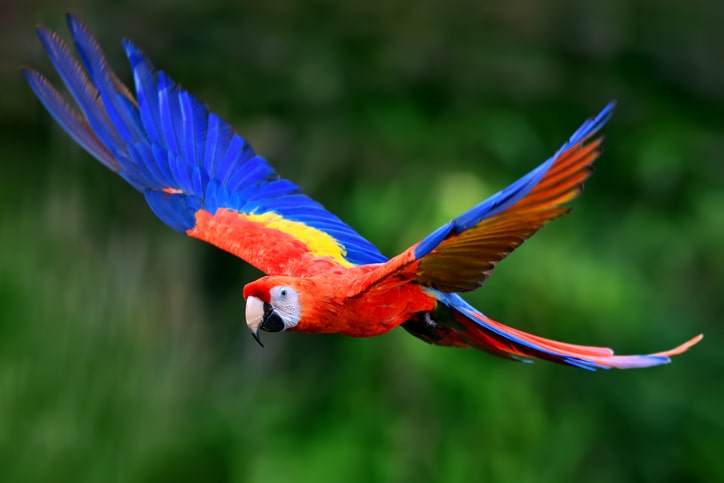
31. The national bird of Honduras is the stunningly beautiful Scarlet Macaw. It is found in the northern Central America and is easily distinguishable with its bright red, yellow, and blue feathers. It is revered as a sacred bird.
32. The rose was Honduras’ national flower from 1946 until it was replaced by the orchid in 1969. The replacement was made because the rose was not native to Honduras. The orchid, specifically the Rhyncholaelia digbyana or the Virgin’s Orchid, was approved as the national flower. The orchid has pure white, fringed petals and grows in elevations of 2,600 ft.
33. Honduras’ coral reef is the second largest after the Great Barrier Reef. The Mesoamerican Reef (MAR) is about 625 ft. long and is shared by Honduras with Guatemala, Mexico, and Belize.
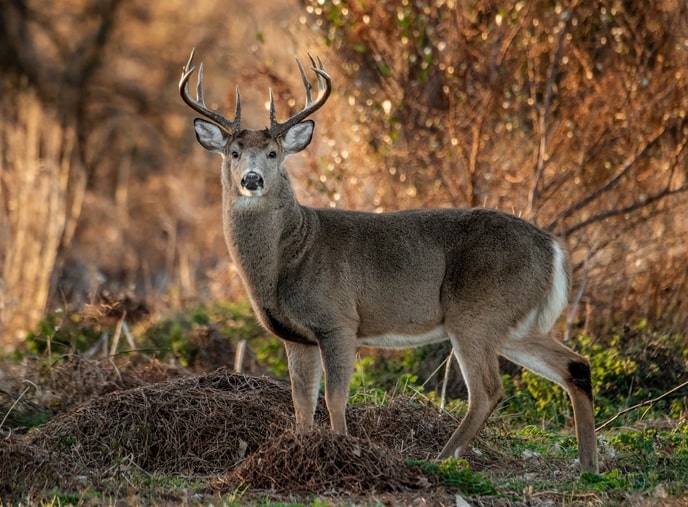
34. The Yucatan white-tailed deer (Odocoileus virginianus) is the national animal of Honduras. It is a symbol of strength, tenderness, energy, fertility, prosperity, and peace.
35. Small-scale fishermen share the Mesoamerican Reef with the Honduran fishing industry as a source of fish and seafood, including snapper, grouper, lobster, and conch.
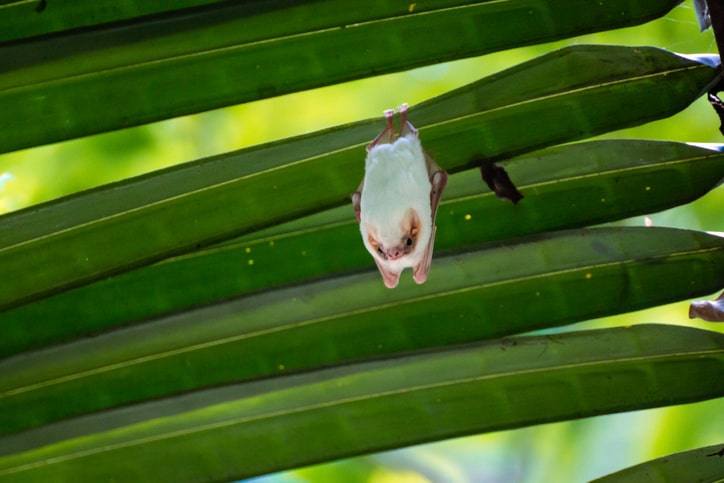
36. Mother Nature has blessed Honduras with many natural treasures, one of which is the Honduran White Bat. The bats are small mammals with fluffy white fur and orange wings, ears, noses, and faces.
37. One of the world’s oldest clocks can be found in the Comayagua Cathedral. The clock may have been built in 1100 A.D. by the Moors. The clock has to be wound everyday to keep it running.
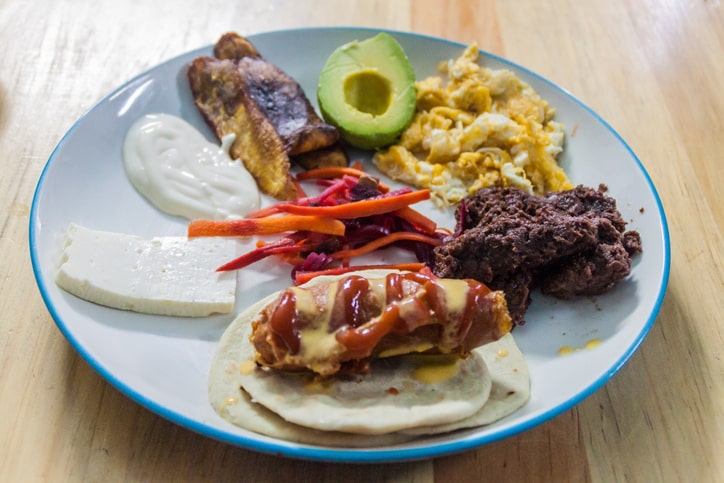
38. The Plato tipico is considered Honduras’ national dish. It is a complete meal by itself and is made of rice, fried plantain, stewed beans, and chismol, with a serving of pork sausages and grilled meat. It is then accompanied by sides such as cheese, sour cream, corn tortillas, and avocado.
39. When young people date in Honduras, they usually do so in groups with their friends. This is the practice among teens younger than 18. When they are older, they begin dating in pairs.
40. Honduras is the first country to prohibit smoking both in public and private areas. This law was enforced in 2011. The law is enforceable only if another person complains. Violators are punished with the equivalent of $311 in fines, which is roughly the same amount as the minimum wage in Honduras for a month.
. . . continue reading on the next page
